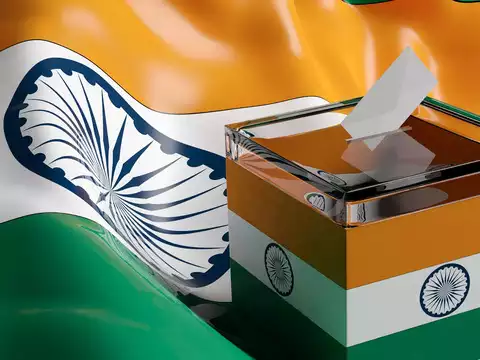In a diverse and populous nation like India, the electoral process has always been a complex and time-consuming affair. With elections being held at various levels of government throughout the year, it often leads to a sense of perpetual campaigning and administrative inefficiency. However, the concept of “One Nation, One Election” has emerged as a potential solution to this problem. This article will delve into the intricacies of this proposal, its advantages, challenges, and the path forward.
| Section | Summary |
|---|---|
| Introduction | India’s complex electoral process; “One Nation, One Election” as a potential solution |
| The Current Electoral Landscape in India | India’s multi-tiered electoral system; Separate elections at various levels |
| What is “One Nation, One Election”? | Proposal to synchronize electoral calendars; Reduce election frequency and streamline the process |
| Advantages of “One Nation, One Election” | 1. Cost Efficiency: Reduced financial burden; 2. Improved Governance: Enhanced policy implementation |
| Challenges and Concerns | 1. Constitutional Amendments needed; 2. Difficulty in achieving political consensus |
| The Way Forward | 1. Stakeholder Consultation: Engage political parties; 2. Pilot Projects: Identify and mitigate challenges; 3. Public Awareness: Inform citizens about the benefits |
| Conclusion | “One Nation, One Election” potential to transform Indian elections; Challenges in implementation |
Table of Contents
The Current Electoral Landscape in India
Before we explore the idea of “One Nation, One Election,” it’s essential to understand the existing electoral landscape in India. India is the world’s largest democracy, comprising a multi-tiered electoral system, including national, state, and local elections. These elections are often conducted separately, leading to a continuous cycle of political activities.
What is “One Nation, One Election”?
“One Nation, One Election” is a proposal that aims to synchronize the electoral calendars of various levels of government. The primary objective is to hold all elections across India simultaneously, thereby reducing the frequency of polls and streamlining the electoral process. This proposal suggests holding Lok Sabha (national) and state assembly elections together, along with local body elections, wherever feasible.
Advantages of “One Nation, One Election”
1. Cost Efficiency
Conducting elections is an expensive affair. By aligning the schedules, the government can significantly reduce the financial burden associated with frequent elections. This would result in substantial savings for the exchequer.
2. Improved Governance
Continuous election cycles often disrupt the functioning of both the central and state governments. By having synchronized elections, elected representatives can focus on governance for a more extended period, leading to better policy implementation.
Challenges and Concerns
1. Constitutional Amendments
Implementing “One Nation, One Election” would require substantial changes to India’s constitution. Ensuring that these changes respect the federal structure and autonomy of states while facilitating synchronized elections is a complex task.
2. Political Consensus
Achieving consensus among the diverse political parties in India is a formidable challenge. Different parties may have varying interests and concerns regarding the proposal, making it difficult to garner unanimous support.
The Way Forward
The idea of “One Nation, One Election” is undoubtedly intriguing, but its successful implementation requires a systematic approach. Here are some steps that can be taken to move this proposal forward:
1. Stakeholder Consultation
The government should engage in meaningful consultations with all political parties, seeking their input and addressing their concerns. Building a consensus is crucial for the success of this reform.
2. Pilot Projects
Before implementing the proposal nationwide, conducting pilot projects in select states can help identify challenges and fine-tune the process. This phased approach can mitigate potential risks.
3. Public Awareness
Creating awareness among the citizens about the benefits of synchronized elections is essential. The public’s support and understanding can influence the political discourse positively.
Conclusion
“One Nation, One Election” is a bold and innovative concept that has the potential to transform India’s electoral landscape. While it offers advantages such as cost-efficiency and improved governance, it also faces significant challenges related to constitutional amendments and political consensus. To move forward, it is essential to engage in extensive dialogue and carefully plan the implementation of this reform.
FAQs
The primary motivation is to reduce the frequency of elections, which can be costly and disrupt governance.
It could lead to a more synchronized approach to governance at both the national and state levels, potentially enhancing policy implementation.
Significant constitutional amendments would be needed to harmonize the electoral calendars, respecting India’s federal structure.
As of now, there have been discussions, but no state has fully implemented synchronized elections.
Public awareness and support can influence political decision-making, so citizens can advocate for this reform through various channels.






